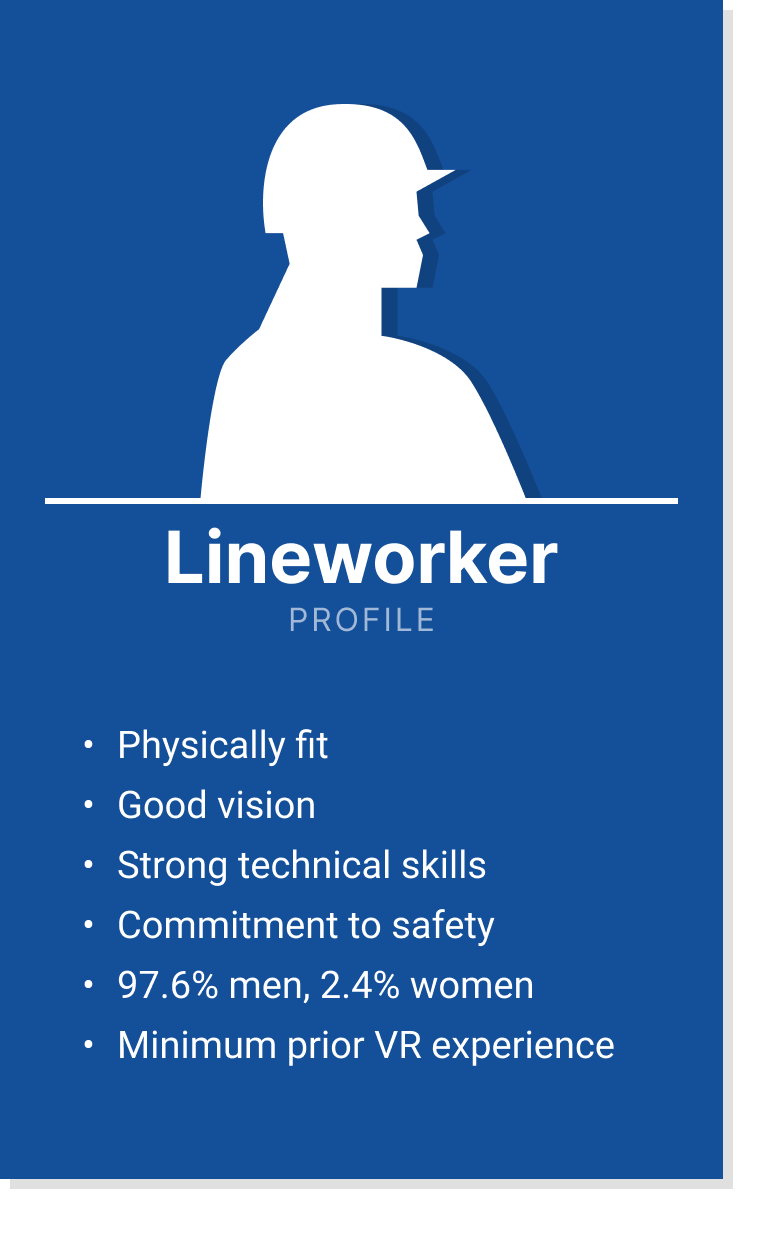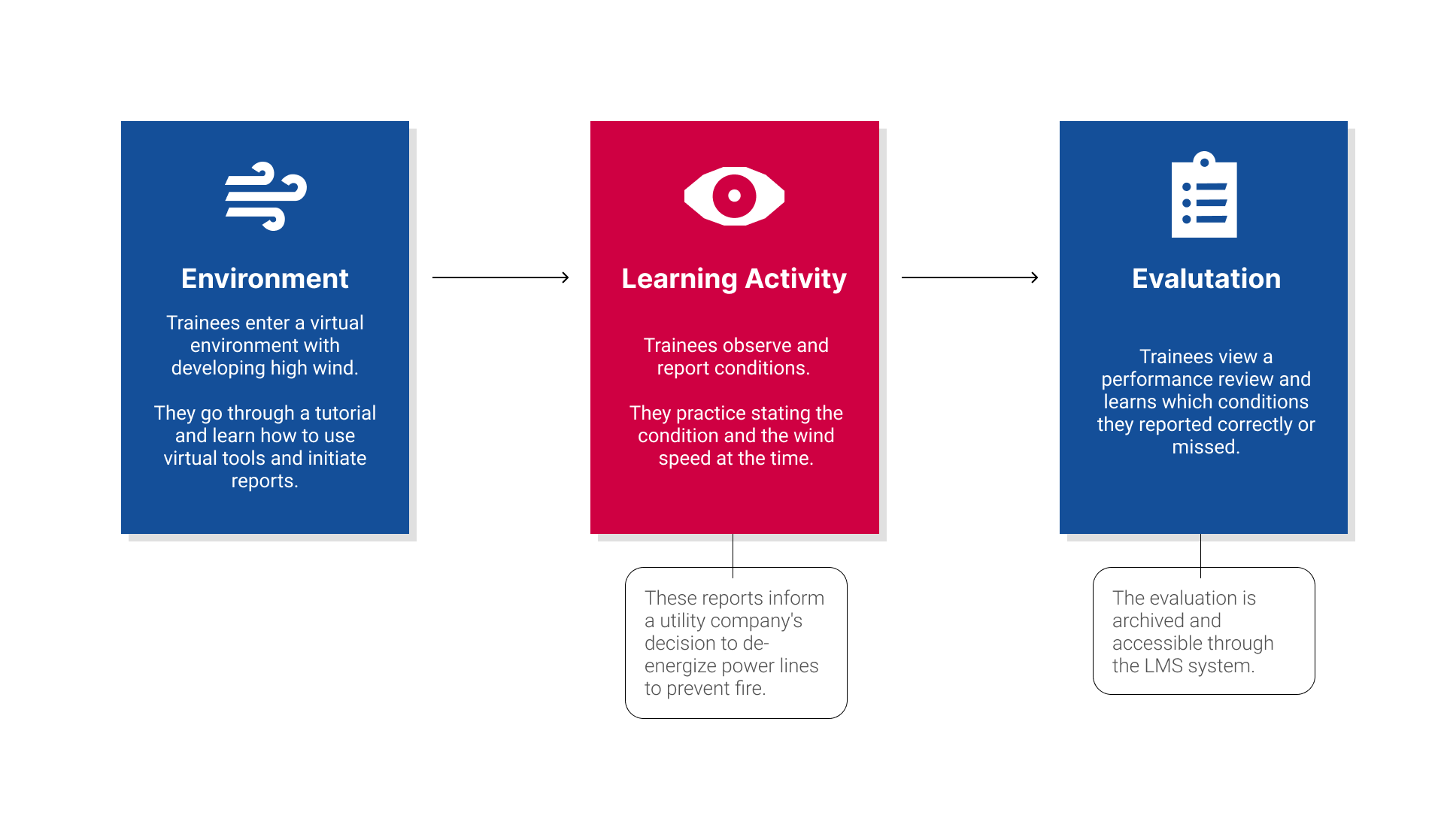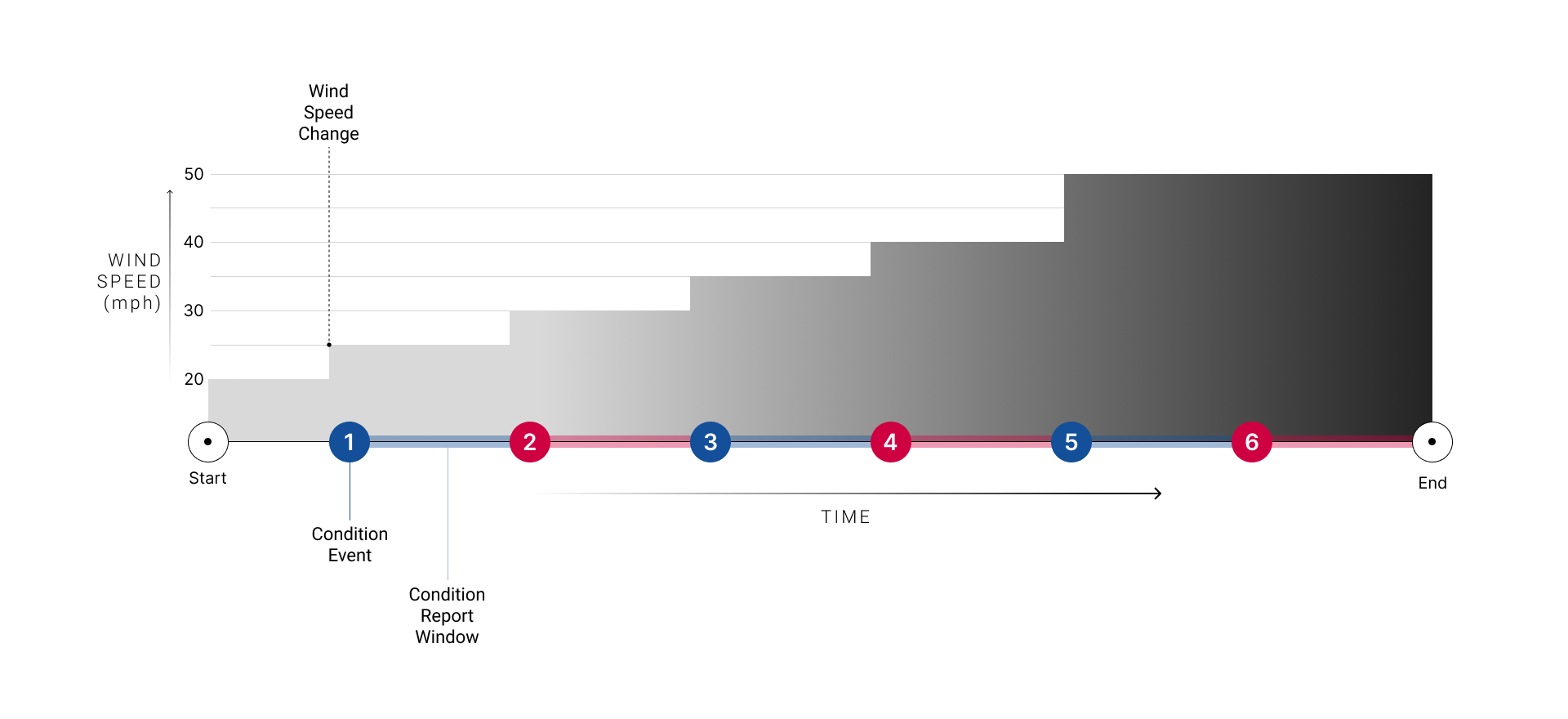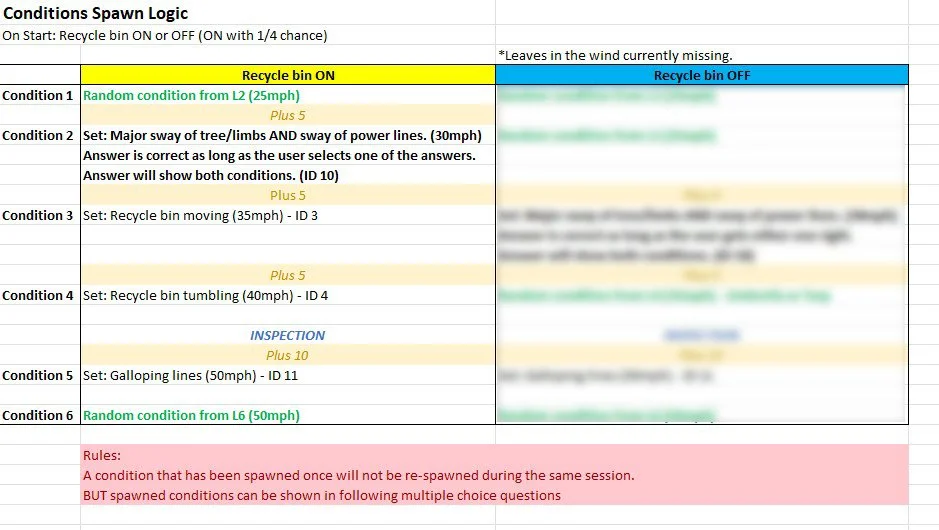Lineworker Training VR
Dev Tool | Unity
Target Platform | Quest 2
Stepping in after product discovery, I was tasked to lead design on an immersive VR training experience to help lineworkers make accurate condition reports in high wind scenarios. These reports help utility companies decide when to shut off power lines to prevent major fires.
Working with an existing design system from previous trainings, I designed a learning journey spanning intuitive onboarding, hands-on interactive training and a clear evaluation report.
The result: a cohesive training that helps build spatial awareness and reporting confidence—all within a safe virtual environment.
CLIENT
Public Utility Company
MY ROLE
ux design
UI DESIGN
interaction design
content design
Illustration
Team
Creative Director
BObby st. aubin
3D lead
jp price
dev lead
Theo christensen
project manager
brian fernandez
Challenges
Learning field specific knowledge and translating it into a VR experience.
Ensuring psychological user safety within a virtual environment with inclement weather.
Designing onboarding content for first time VR headset users.
Learning Goals
“to make accurate condition reports in high wind scenarios”
Active Goals
- Practice spatial condition observation.
- Practice making quality reports: cite the condition and the wind speed at that time.
Passive Goals
- Understand what is a safe area to be making reports
- Become familiar with when to leave a site.
-Learn about the different condition categories: system, debris, and vegetation.
-Gain exposure to major and minor conditions.
Training Overview
Setting
The Stage
We built the training environment very close to the type of area that lineworkers would be dispatched to:
a rural area with power lines and ample vegetation.
The Vantage Zone
We set up a Vantage Zone to convey the type of safe area where trainees should report conditions from.
Requirements
- Unobstructed view of power lines
- Not directly under a large tree for safety
- Direct access to the road
- Close to vehicle
The training starts by guiding trainees to the Vantage Zone. Once a trainee enters the designated zone, they are prevented from exiting the zone during the training.
The Learning Activity
Video shows a trainee spotting the galloping lines condition and completing a report.
Trainees report conditions through a multiple choice question,
and report the wind speed by observing a virtual wind meter.
Condition Report Menu - Multiple Choice
Wind Speed Report Menu
Building the Activity
We set up six reporting opportunities in a single training. Wind speed would increase five times in the training, and speed appropriate conditions would occur at those times. Trainees were given a window to complete reporting until the next condition was introduced.
The Conditions
It was crucial to have a list of reportable conditions categorized by the wind speed at which they would occur. Conditions occuring at the same wind speed were grouped into a same level category.
I worked closely with subject matter experts(SMEs) and referenced their official learning materials to make the list.
Event Logic
Then I weaved in the aspect of time and specified at which point certain conditions could occur.
For example, Condition 1 could be any level 2 condition.
We set condition 5 to always be galloping lines, because it is a particularly dangerous condition that often occurs and should always be reported in the field.
Reporting System
Immediate feedback on the trainee’s report was central to the learning design.
Quickly after submitting a report, the trainee would learn whether it was accurate or not.
When trainees missed a report, they were given immediate feedback via the user interface. It conveyed that they missed a condition, what condition they missed, and the wind speed at that time.
We took every opportunity to provide feedback, so trainees can learn from their mistakes.
Evaluation
A performance summary was available at the end of each training.
This detailed a trainee’s performance across the six condition reports.
These reports were streamed to a Learning Management System (LMS), giving instructors easy access to student performance data outside of VR.
Onboarding & Tutorial
An important piece of the experience was a guided interactive tutorial at the beginning of the experience. This helped trainees become familiar with VR controls and navigation.
This included a guided condition report practice to reduce the chances that a trainee’s unfamiliarity with VR could hinder training accuracy.
Outcomes
Rolled out to 1000 trainees
Received 90% approval rating
Credited with helping reduce wildfires in Southern California
(Information from client company)





















